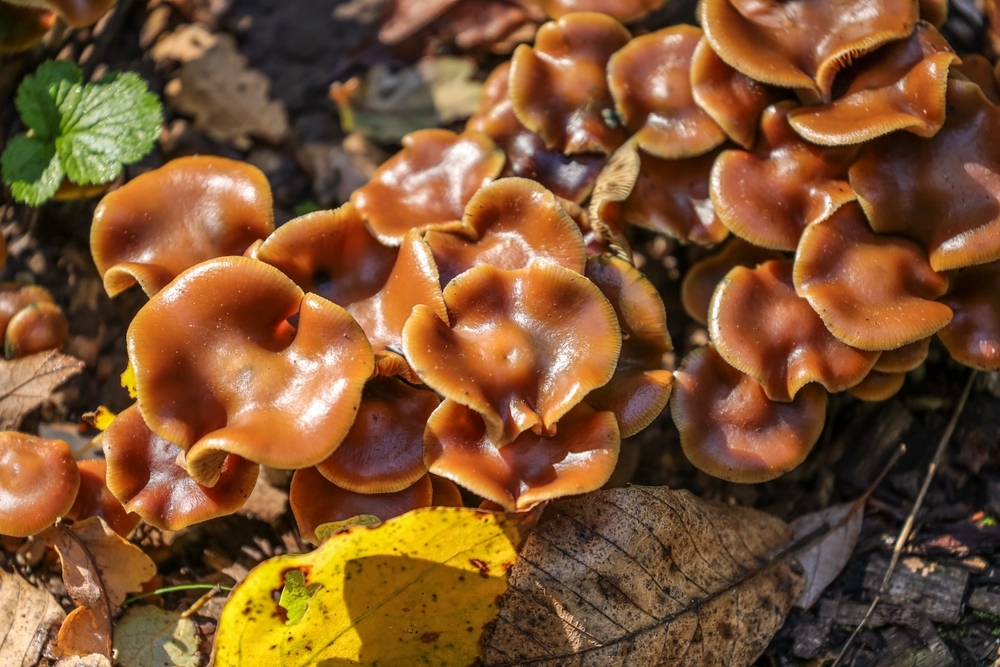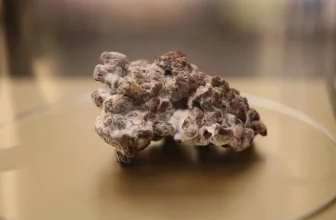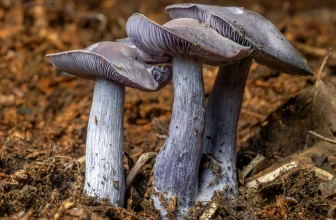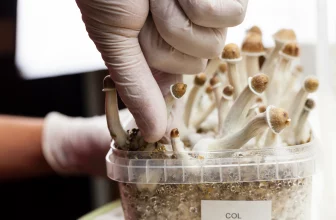
The magic mushroom known scientifically as Psilocybe cyanescens is also called Wavy Caps. Don’t confuse Psilocybe cyanescens with Panaeolus cyanescens, which is the Blue Meanies mushroom strain we discussed in an earlier article.
Psilocybe cyanescens, or Wavy Caps, is a potent psilocybin mushroom. It’s one of over 180 different magic mushroom strains with its own powerful and mystical effects for psychonauts ready to take a trip into space.
Table of Contents
A Funky Fungal History
A British mycologist (fungi expert) named Elsie Maud Wakefield first identified Wavy Caps mushrooms in the 20th century, denoting the mushroom’s bluing reaction when bruised.
Fungi have always been linked to some aspect of magic, and as we look into these connections further, Humans uncovered unexpected applications for them. Psilocybe use in Central America and Amanita muscaria use by Siberian shamans are both well-known.
Additionally, there is proof that the ergot (a fungus that grows on rye) played a role in the Eleusinian mysteries, the most notable secret religious rites of ancient Greece. Academic literature contains accounts of other fungi used in ceremonies, such as a Boletus by the curious Kuma of New Guinea and a Lycoperdon puffball used for divination by the Tarahumara of Chihuahua in northern Mexico.
A Growing Interest in Medicinal Magic Mushrooms
Psilocybin is one of the original psychedelics, naturally occurring in Psilocybe mushrooms. There is (and has been) a growing interest in the origins of psilocybin due to the shroom’s potential medical applications for treating various mental health issues.
Author Robert Gordon Wasson first introduced an American audience to psilocybin mushrooms in his 1957 Life magazine article called “Seeking the Magic Mushroom.” He reported on his incredible experience in Mexico after consuming a magic mushroom, which was later identified as a Cubes mushroom (Psilocybe cubensis).
After this fascinating article appeared in the popular magazine, experts administered thousands of shroom doses in clinical experiments for more than a decade before their widespread international prohibition under the 1971 UN Convention on Psychotropic Substances.
Current State of Magic Mushroom Research
Psilocybin has been shown in studies to have the potential to treat a variety of psychiatric and behavioral disorders, though the FDA has not yet approved it for any use.
Shrooms might help those experiencing obsessive-compulsive disorder, depression, nicotine addiction, alcoholism, cocaine addiction, cluster headaches, and psychological distress brought on by cancer or other terminal illnesses. Psilocybin therapy for cancer is one of the most promising research areas for the substance.
Given the enormous number of potential uses for psilocybin, it’s important to remember that the amount of research also varies greatly, from single pilot studies to phase II or III approval trials by the FDA.
The Drug Enforcement Administration (DEA) still lists psilocybin mushrooms as a Schedule I substance, which means they have “no currently accepted medical use and a high potential for abuse.”
Marijuana, MDMA, and LSD are examples of other Schedule I drugs.
Where You Can Find Wavy Caps Mushrooms
Psilocybe has many species found in many different habitats on every continent (aside from Antarctica). It turns out that there are many other genera of fungi that contain psilocybin, including Gymnopilus, Inocybe, and Conocybe.
You can find Wavy Caps mushrooms all over the Pacific Northwest, especially during the fall and early winter when the temperatures drop to 60°F. It spreads along the west coast as far north as Alaska and as far south as San Francisco.
This magical mushroom also grows in temperate areas of Europe, such as the UK, Italy, Germany, Spain, New Zealand, Sweden, and some West Asian regions.
Wavy Caps mushrooms eat decaying forest debris and grow in large clusters. They favor fields of debris covered in rotting wood, wood chips, and sawdust. These shrooms can also grow in urban areas in gardens with a lot of mulch and wood chips and under mixed woods at the edges of lawns.
Without a knowledgeable mycologist, gathering Wavy Caps mushrooms in the wild is risky because of some dangerous lookalikes. This includes the deadly amatoxins found in Pholiotina rugosa and Galerina marginata.
What Does a Wavy Caps Mushroom Look Like?
The Wavy Caps mushroom got its name because it looks like it’s wearing a little wavy cap. Initially, the cap is a cinnamon-brown hue, but they turn a darker, mottled brown as they oxidize. The flat shape of the delicate cap occasionally curls up as it gets older.
It has a yellowish-white stem that grows about 3 cm to 6 cm tall. Usually, the largest part of the stem at the base is 3 cm to 6 cm thick. It has a smooth, white surface that is bruised blue and is extremely hairy. On the mushroom’s cap, there are purple and brown spore prints. The spores are closed when they’re young but open up as they age.
How Potent Is the Wavy Caps Mushroom?
Most users describe the Wavy Caps mushroom as potent, containing 1.68% psilocybin. Many people claim that they only needed to take half as much of Wavy Caps mushroom because of its powerful effects, producing a trip that is incredibly euphoric, reflective, and visionary.
Many people dislike the taste of Wavy Caps because it’s so bitter. However, to remove some bitterness, try lemon tekking or shroom tea.
Before Taking Your Trip
When using mushrooms, the last thing you want is for them to do their magic by surprise, resulting in anxiety in your body. Give the Wavy Caps magic mushrooms enough time to work before taking more to avoid an unpleasant trip, just as you would with edibles. Enjoy your trip, prepare your mushrooms carefully, and pay attention to your body.






